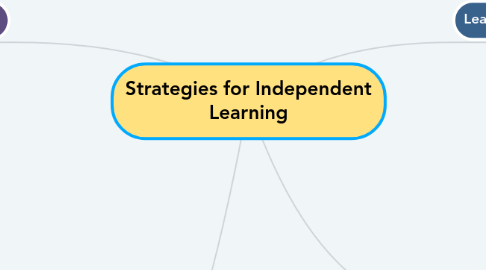Strategies for Independent Learning
by Haley Grace

1. Self Learning
1.1. Self-advocacy- An individual’s ability to effectively communicate needs. This is a skill that is taught in special education.
1.2. Self-determination- the belief that a person can direct their own life. This is an important belief to have in regards to getting a job and being independent.
1.3. Self-instruction- Ability to plan one’s independent learning without the prompting of a teacher.
1.4. Self-monitoring- Students monitor their own behavior techniques and record it on a sheet.
1.5. Self-questioning- The ongoing process of asking questions before, during, and after reading.
2. Connection To Previous Learning- In this chapter we learned about strategies for independent learning. This reminded me of what we learned about a couple of weeks ago, with students in high school with special needs who are preparing to enter into the "real world" meaning, the world outside of school. The "self learning" strategies in this chapter are essential for students with special needs to be able to live independently after high school.
3. Learning Tools
3.1. Controlled materials- Materials at a student’s reading level, free of complex vocabulary and concepts.
3.2. Key-word strategy- When a student uses what a word sounds like to visualize something memorable that will help them remember the definition of them.
3.3. Learning strategies- An individual’s approach to complete a task independently
3.4. Pattern guide- Graphic organizers that will help students organize their written papers.
3.5. Reading pen- Pocket-sized device that reads text out loud for those who have difficulties reading.
4. Peer Learning
4.1. Peer editing- When students read one another’s work and make suggestions for improvement and editing.
4.2. Reciprocal teaching- Instructional reading activity where students are the teachers. The teachers model first, then the students guide the group discussions.


